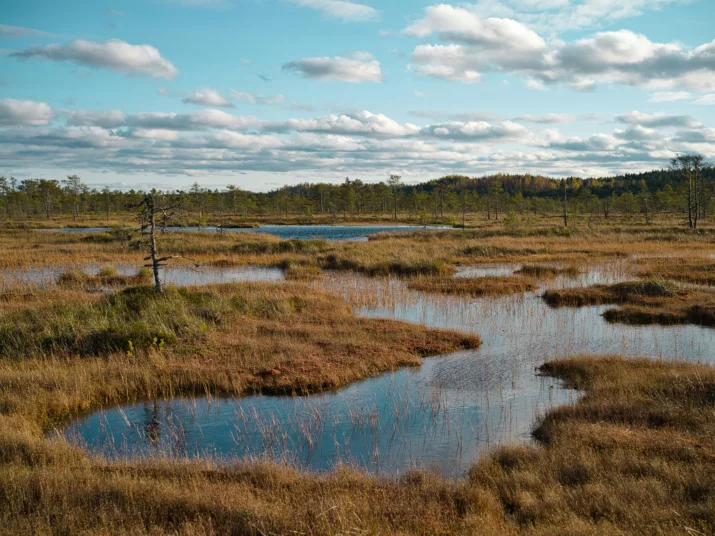
Mires
Wet wonders
Ever heard of paludiculture? That's the name given to farming on wet moorland. In the past, many moors in Germany were drained to create fields and pastures.
Photo: Maksim Shutov auf Unsplash
But this has consequences: Drainage releases a lot of CO2 into the atmosphere - which is bad for the climate. Today we know: Peatlands must remain wet in order to function as CO2 reservoirs.
But what does this mean for agriculture? Even wet areas can be farmed - with plants such as peat mosses and cattails, which you can see here in the mini bog. Peat mosses are suitable as a sustainable substitute for peat in horticulture. And cattails can be used as a renewable raw material for insulation, for example.
The first pilot projects are underway in northern Germany and Mecklenburg-Western Pomerania. Paludiculture is also being tested in the Netherlands and Lithuania. Research and practice show: It works - but needs promotion, know-how and patience.
Paludiculture is a promising way of combining climate protection and agriculture. It turns an old problem - peatland drainage - into a sustainable solution.